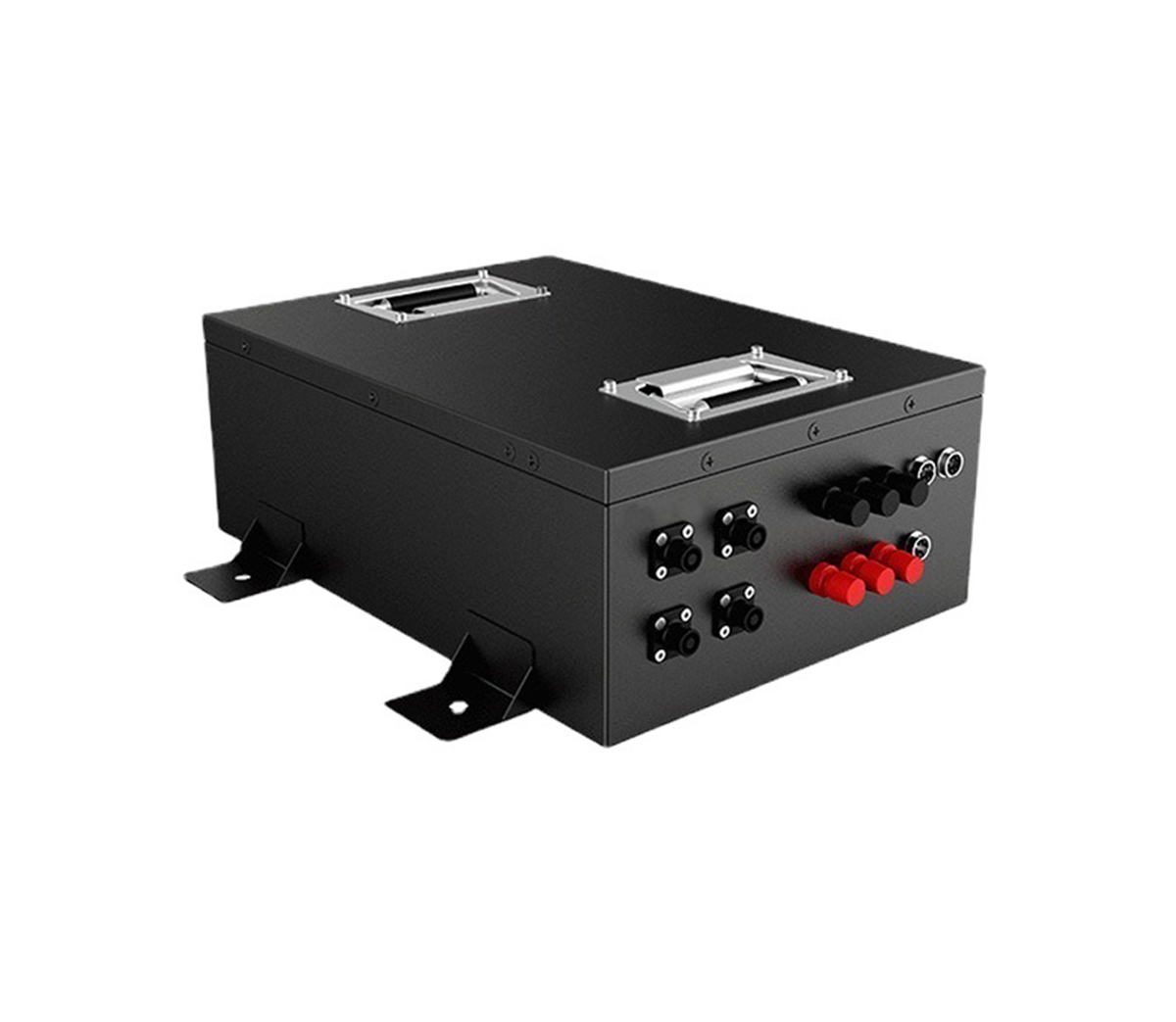
With the continuous breakthroughs in power battery technology, the energy
density and power density of lithium batteries have increased in parallel. This
has increased the driving range of electric vehicles, and on the other hand, it
has also made the replenishment time comparable to that of fuel vehicles.
possible. In the accelerated iteration of technological innovation, electric
vehicle users are gradually bidding farewell to the long-troubled "charging
anxiety".
With the continuous breakthroughs in power battery technology, the energy
density and power density of lithium batteries have increased in parallel. On
the one hand, the driving range of electric vehicles has been improved, and on
the other hand, the replenishment time is comparable to that of fuel vehicles.
possible. In the accelerated iteration of technological innovation, electric
vehicle users are gradually bidding farewell to the long-troubled "charging
anxiety".
"Power Sharing" Charging Reactor Scheme
The matrix flexible charging stack technology can not only meet the current
battery charging needs, but also meet the future "battery upgrade" needs,
avoiding repeated dismantling of charging piles
As of the end of last year, my country had 450,000 charging piles of
various types, 14 times that of the end of 2014, and the ratio of vehicles to
piles nationwide was about 3.8:1. However, while the construction of the
charging network is advancing steadily, there is also a certain degree of
structural supply shortage. The misallocation of resources has led to the
coexistence of "difficult charging" and a large number of idle public charging
piles. In addition, for a long time, most of the public charging piles for
electric vehicles put on the market are fixed-power charging piles, and the
design of charging piles has been considered to meet the current automotive
battery standards. 40 kilowatts, 60 kilowatts, 80 kilowatts, 110 kilowatts...
With the increasing power of newly listed models, charging piles will face
replacement or expansion.
The coexistence of electric vehicles with multiple powers is already a fait
accompli in the electric vehicle stock market. Therefore, in centralized
charging stations, how to improve the power compatibility of charging equipment
is the key. "In the case of the same charging current, when the voltage is
increased to 1000 volts, if the voltage platform is still charging a 350 volt
car, the power utilization rate of the existing technical solution is only less
than one-third of the original, and the equipment utilization rate Very low."
said Xiao Xia, chairman of Shenzhen Autosun Power Equipment Co., Ltd., "The
charging stack technology can not only meet the current battery charging demand,
but also meet the future "battery upgrade" charging demand, avoiding the
repeated charging of charging piles. Dismantling."
It is reported that the matrix flexible charging stack technology developed
by Auto Motion integrates all or part of the charging modules of electric
vehicle charging stations, and dynamically allocates the charging modules
according to the actual charging power required by the electric vehicle through
the power distribution unit. That is to say, in the charging station using
charging pile technology, after the same charging pile power sharing, it can not
only meet the 100 kilowatts of battery charging, but also can meet the 300
kilowatts of battery charging, ensuring that each new energy vehicle can achieve
the maximum power Charge. In Shenzhen, there are currently more than 80
centralized charging stations for flexible charging stacks invested,
constructed, and operated by Auto Motion.
Since December last year, the Shenzhen Municipal Standardization Guidance
Technical Document-"Technical Requirements for Flexible Charging Reactor for
Electric Vehicles" jointly organized and formulated by the Shenzhen Municipal
Market Supervision Administration and the Shenzhen Development and Reform
Commission has been implemented in Shenzhen. This is the first domestic Local
standards for flexible charging stacks for electric vehicles. As a leading
enterprise in the sub-industry of power automation power supply, Shenzhen
Autosun Power Equipment Co., Ltd. is the lead drafting unit of this
standard.
"For operating vehicles such as taxis and trucks, the power adaptability of
the centralized charging station directly determines the convenience of
charging." said Ni Feng, deputy director of the International Department of
Guodian NARI Technology Co., Ltd., "At the centralized charging station In the
application scenarios of the new technology, the charging reactor technology has
the characteristics of accurate and efficient matching, which will undoubtedly
be very useful."
Tap the potential and high-power fast charge
It is generally believed that the "fast charge" of electric vehicles refers
to the charging technology in which the battery is charged from 0% to 80% in
less than 30 minutes
At the recent seminar on high-power charging of electric vehicles, CATL
showed the participants the charging process of the super-iron-lithium battery
using the "super-iron-lithium + high-energy-density fast-charging graphite"
system. The product can be charged with "5C". The demonstration process takes
only 7 minutes and 12 seconds to complete 20% to 80% charging, and 20% to 100%
charging takes only 13 minutes and 8 seconds.
Energy storage technology expert and Ecoflow founder Dr. Wang Lei said,
“Ultra-high-power charging uses high-voltage DC technology, which, vividly
speaking, is to dump electricity into the battery.” The unit "C" in "5C" refers
to the charge rate, which can be understood as the charge and discharge rate.
The charge-discharge rate of a lithium-ion battery determines how quickly
electrical energy can be stored in the battery, or how quickly the energy in the
battery can be released. "1C" current, from full charge to discharge, it takes
1/1=1 hour; "2C" means 1/2 hour, which is 30 minutes; 5C means 12 minutes. It is
generally believed that the "fast charging" of electric vehicles refers to a
charging method with a charging current greater than 1.6C, that is, a technology
that takes less than 30 minutes to charge from 0% to 80%.
"The demand for high-power charging is very clear. There are urgent needs
for commercial vehicles, taxis, online car-hailing and other vehicles at home
and abroad. Especially in large cities such as Beijing, Shanghai, Guangzhou and
Shenzhen where parking spaces and charging pile resources are scarce, it is
difficult for car owners to In the case of finding a parking space for charging,
there will be a strong demand for high-power charging." Ni Feng said, "However,
high-power fast charging products of more than 300 kilowatts are in their
infancy all over the world, with battery heating, equipment volume, and safe
isolation. Other technical issues have yet to be optimized, and there is a long
way to go from mature technology to mature market; in addition, there are also
infrastructure supporting issues such as the construction of charging stations
and power grids that have yet to be resolved."
Management and service need to be more refined
Experts said that in order to promote the healthy development of electric
vehicles, intelligent and refined management of charging services is the general
trend
my country has ranked first in the global production and sales of new
energy vehicles for three consecutive years. As of the end of last year, the
cumulative sales of new energy vehicles in my country reached 1.8 million, more
than 50% of the cumulative global sales. "According to market trends, after
2020, there will be more and more high-power electric vehicles with more than
three or four hundred kilowatts." Ni Feng believes, "No matter whether it is the
charging stack or the battery itself, there are no technical problems." In
addition, Although early operators did not consider power expansion, in recent
years, more and more operators have reserved space for expansion in centralized
charging stations. Expansion-just add the corresponding modules."
Liu Yongdong, deputy director of the Standardization Management Center of
the China Electricity Council, said that in terms of charging methods, the
future trend of electric vehicles will be "private AC charging pile daily slow
charging" and "public fast charging" for a long time to coexist and combine with
each other. "For urban families who use electric vehicles to commute, using
private charging piles at home after get off work, long-term slow charging can
already meet most of the needs; using fast charging at charging stations will be
a necessary supplement." .
The optimization of the management system in the charging field is expected
by many experts. Ni Feng cited an example of a cooling solution for the power
module of a charging station. The mainstream cooling schemes for power modules
include water cooling and air cooling. The former has a long service life and
high reliability, but it is expensive; the latter is inexpensive but has high
environmental requirements and is prone to dust clogging after long-term use.
"The domestic bidding mechanism of the'lowest price' has led many operators to
adopt the air-cooling model, but all of them need to be replaced after less than
two years of use. The overall cost of use is higher than using water-cooling,"
Ni Feng said. .
"Today we are talking about the improvement of charging technology and
management and services, all based on the healthy development of electric
vehicles." Ni Feng said, "The most fundamental driving force of electric
vehicles still comes from the electric vehicles themselves, from the ecological
adjustment of the entire industrial chain. And changes. What we are most
concerned about is still how strong users' desire to consume and use electric
vehicles after the relevant subsidies are removed is the key to the long-term
development of the entire industry."



































